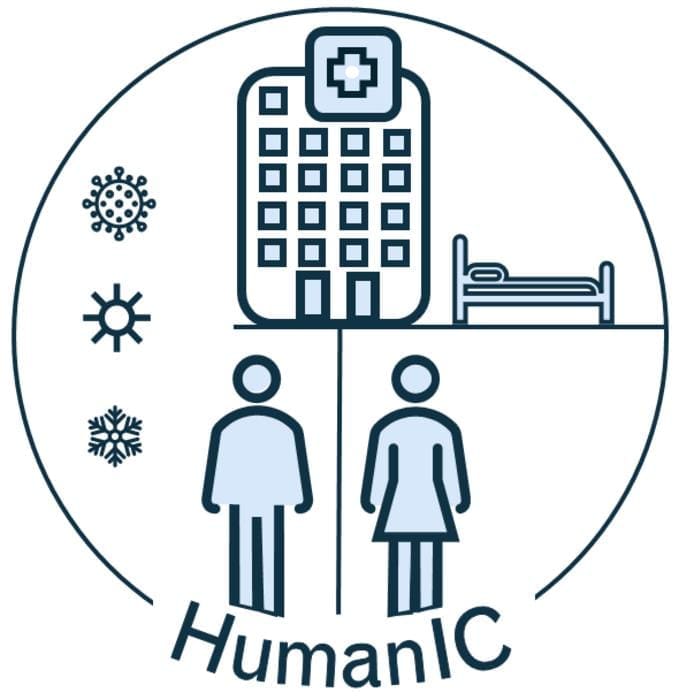By Universidad Carlos III de Madrid

The European scientific project HumanIC, in which Universidad Carlos III de Madrid (UC3M) is participating, aims to create a new approach to the environmental design of hospitals through the concept of human-centered indoor climate. Instead of the traditional approach of focusing solely on the building and its ventilation and heating systems, this network will develop new approaches to integrate the multi-dynamic interaction between pollution sources and airflow distribution systems with the clinical, patient and energy needs of the hospital environment.
Through an ambitious research programme and a tailor-made training programme, HumanIC will provide a new generation of scientists and engineers who understand the implications of these complex interfaces for the design of future hospitals.
The HumanIC network brings together leading academic teams from across Europe with partners from the hospital and healthcare HVAC industry. The aim is to train early-career engineers and scientists to take a new approach to human-centred indoor climate in healthcare environments.
What is a human-centred indoor climate?
Human-centred indoor climate is defined as the micro-environment surrounding and in close proximity to a human body. The concept focuses on human beings and their surrounding environment, which should be understood as a specific micro-environment, rather than the “physical vicinity” of a human body.
The human-centred indoor climate of hospitals plays a key role in the safe and effective delivery of healthcare. Operating theatres, isolation rooms, treatment rooms and laboratories allow increasingly sophisticated treatments to be administered safely to patients, while wards, consulting rooms and waiting rooms provide essential facilities for patient interaction, comfort and well-being during recovery.
Healthcare associated infections (HAI)
It is estimated that more than 4 million patients acquire a healthcare associated infection (HAI) in the European Union each year. On any given day, some 80,000 patients suffer at least one HAI, i.e. one in every 18 patients in European hospitals.
The global antimicrobial resistance crisis means that HAIs pose an increasing cost and mortality risk. The hospital environment is responsible for 20% of all HAIs, and there is clear evidence that building design and human activities contribute to the transmission of infectious diseases.
Improving the indoor environment of a hospital building can reduce the costs associated with airborne diseases by 9% to 20%. Ventilation and indoor air are of particular concern, and numerous studies show that airflow controls the spread and exposure to airborne pathogens.
The work carried out at UC3M focuses on the experimental study and development of reduced models for complex flows in hospital environments. The fluid field will be studied using advanced experimental techniques such as laser velocimetry. From the field measurements, a simplified airflow model will be identified that will allow the development of algorithms for real-time flow estimation in operating theatres.
The impact of pandemics and climate change
The WHO acknowledged that during the Covid-19 pandemic many hospitals were working over capacity, with patients recovering in rooms that were never designed for them. Added to this, climate change is increasing health demands (future pandemics, heat-related diseases and infections; surgical site infection and mortality), challenging hospitals to maintain comfortable, human-centred thermal indoor climate conditions and, at the same time, driving hospitals to reduce energy consumption.
The HumanIC consortium considers human interactions with indoor environments and how this affects the transient dispersion of contaminants (particularly in protected microenvironments at risk, such as surgery) as a central prerequisite for the safe operation of these facilities. In particular, it is central to eliminating or minimising threats from airborne pathogens while ensuring good thermal comfort. HumanIC will generate new knowledge on the physical transmission processes and interactions between pollutants and airflow, and apply this knowledge to optimise the design of technical solutions and develop novel methods for visualising and controlling the human-centred indoor climate in hospital environments.
***
The HumanIC project has received funding from the European Union’s Horizon Europe research and innovation programme under the Marie Sklodowska-Curie programme (HORIZON-MSCA-2022-DN-01, project no. 101119726). The project partners are the following: Warsaw University of Technology, Norwegian University of Science and Technology, Technische Universität Berlin, KTH Royal Institute of Technology, Aalto University, St. Olavs Hospital, University of Coimbra – Polo II, Universidad Carlos III de Madrid, Fundación Para la Investigación Biomédica Hospital Gregorio Marañón, University of Leeds, Granlund Oy, Halton Oy, Charité – Universitätsmedizin Berlin, ActiveTek Medica, REHVA, Drees & Sommer SE, Avidicare AB and Industry.
More information: UC3M Press Release/Material Featured image credit: DC Studio | Freepik




